The Carrizo Aquifer Crisis: Kyle Bass’s 15 billion gallon annual Water Extraction Plan Sparks Outcry in Texas
The acquisition of aquifers by billionaires and investment firms in the United States is raising alarms about water security, environmental sustainability, and socioeconomic inequality. In Texas, a high-profile case involving billionaire hedge fund manager Kyle Bass and the Carrizo-Wilcox Aquifer highlights these concerns. Bass’s investment group, through Conservation Equity Management (CEM), seeks to extract up to 15 billion gallons of water annually from this vital groundwater source, claiming the project aligns with “careful planning, scientific rigor, and a commitment to sustainability” [link]. This proposal has drawn significant opposition from local communities, officials, and agricultural stakeholders who depend on the aquifer. A letter from Athens Mayor Aaron Smith, dated June 16, 2025, underscores this resistance, labeling the extraction scale as “excessive, irresponsible, and unacceptable.” Drawing on trends from a University of Tulsa analysis on water use LINK to article and an Arizona case of unchecked groundwater pumping link to article, this article examines the implications of Bass’s plan and its impact on Texas’s agricultural sector.
Kyle Bass’s Plan for the Carrizo Aquifer
Kyle Bass, CEO of Conservation Equity Management, has applied for permits to drill 21 high-capacity wells in Anderson County, targeting the Carrizo and Wilcox aquifers, with an additional 11 wells in Houston County potentially extracting a total of 15 billion gallons annually—roughly 46,000 acre-feet. The Carrizo-Wilcox Aquifer supplies drinking water to cities like Crockett, Van, Athens, and Smith County, supports local agriculture, and sustains ecosystems in East Texas. CEM describes the project as a phased, science-based approach to address Texas’s growing water needs, stating, “Let’s be clear: we are not seeking to produce or export water at this time” and that the drilling permits are for data collection to validate hydrologic models developed over 18 months [link]. State Representative Keith Bell, in a letter dated June 9, 2025, opposes the plan, noting, “I write today to formally express my strong opposition to the pending permit applications for the development of high-capacity water wells in both southern Anderson County and Henderson County. As proposed, these projects would collectively draw more than 25 billion gallons of groundwater annually from the Carrizo and Wilcox aquifers.” Chairman Cody Harris added on May 29, 2025, “I have been made aware of the intent to drill 21 wells in Anderson County that are capable of removing over 10 billion gallons of water a year—directly depleting our local aquifers.” State Senator Robert Nichols, in a June 11, 2025, letter, also objected, stating, “I write to express my opposition to the pending permit application submitted by Pine Bliss LLC, which seeks authorization to drill 22 high-capacity groundwater wells in Henderson County.”
The Potential Role of Data Centers
The rapid expansion of data centers, driven by cloud computing and artificial intelligence, is placing significant pressure on water resources in water-stressed regions like Texas. According to a University of Tulsa analysis [link], a single data center can consume up to 5 million gallons of drinking water per day for cooling systems, enough to supply thousands of households or farms. In 2022, Google’s data centers used 5.6 billion gallons of water, Microsoft’s consumption rose 34% to undisclosed totals, and Meta withdrew 1.29 billion gallons. These figures are projected to grow with the rise of AI, requiring extensive cooling.
Data centers treat cooling water with chemicals, rendering it unsuitable for human consumption or agriculture and effectively removing it from the local water cycle. In arid regions like Texas, data centers are increasingly located, where dry air reduces equipment corrosion. The University of Tulsa notes that in Phoenix, over 58 data centers collectively use more than 170 million gallons of drinking water daily, a trend observed in Texas’s tech hubs.
Lessons from Arizona: Unchecked Groundwater Pumping
The dangers of private entities exploiting aquifers are evident in Arizona, where a Saudi-owned company, Fondomonte, has been pumping vast amounts of groundwater from the Butler Valley without cost. Since 2015, Fondomonte has leased 3,500 acres, extracting an estimated 22,400 acre-feet of water per year—valued at $5.42 million annually—depriving Arizona’s public schools of approximately $38 million over seven years. Former Governor Bruce Babbitt and State Land Commissioner Robert Lane have called for voiding the lease and recovering past dues, emphasizing the need to protect groundwater reserves [link/].
The Fondomonte case illustrates the risks of inadequate oversight, a concern relevant to Texas’s current situation with Bass’s proposal.
The Dangers of Privatizing the Carrizo Aquifer
Bass’s proposal poses significant risks to ranchers, farmers, and wider communities.
1. Threat to Public Water Access
The Carrizo-Wilcox Aquifer is critical for East Texas communities, including Athens, Crockett, Van, and Smith County. Bass’s proposed 15 billion gallons annual withdrawal could strain local supplies, especially during droughts. Smith County Judge Neal Franklin, opposing the plan, stated, “That aquifer actually extends over here in Smith County,” leading the Smith County Commissioners Court to file a notice of contest against the well applications, urging, “Let’s just slow this thing down… Don’t permit anyone to do this, and let’s bring in experts and let them evaluate the issue” [link].
1. Environmental Degradation
Extracting 15 billion gallons yearly from the Carrizo-Wilcox could deplete the aquifer faster than it recharges, threatening spring flows, rivers, and wetlands. Texas’s increasing drought frequency, projected to reduce groundwater availability by 25% by 2070, heightens these concerns.
1. Exacerbation of Inequality, Particularly for Ranchers and Farmers
Bass’s water extraction could harm ranchers and farmers reliant on the Carrizo-Wilcox Aquifer for irrigation and livestock watering. Jeremy Kilburn, chief legal and compliance officer at Wayne Sanderson Farms, a major chicken producer partnering with 350 family farms and employing over 5,700 people statewide, said, “We’re concerned about making sure that we’re able to operate at our fullest possible extent, so that we can provide those jobs to those folks and partner with those farmers. If water becomes a limiting factor to our operations, that can impact jobs” [link]. Reduced aquifer levels could increase pumping costs or reduce yields, threatening livelihoods.
1. Undermining Democratic Governance
Texas’s “rule of capture” allows unlimited groundwater pumping with minimal oversight from underfunded districts like the Neches and Trinity Valleys (NTVGCD). This legal framework enables the proposed drilling, sidelining local stakeholders. Chairman Cody Harris emphasized, “I will not stand by while attempts are made to drain my own district,” reflecting community resistance.
Impact on Ranchers and Farmers: A Closer Look
Ranchers and farmers face risks from Bass’s extraction. A 15 billion gallon annual withdrawal could lower groundwater levels, increasing costs. Wayne Sanderson Farms’ Kilburn highlighted the potential job impact, underscoring the need to protect agricultural water needs. The Fondomonte case in Arizona, where alfalfa exports depleted groundwater, left farmers struggling.
Crockett, Van, Athens, and Smith County officials, alongside state legislators like Nichols, Harris, and Bell, oppose Bass’s permits. The Neches and Trinity Valleys Groundwater Conservation District will host a public hearing today, June 19, 2025, at 1 p.m. in Jacksonville. Texas’s water challenges—$154 billion needed over 50 years—amplify the crisis.
The Conservation Paradox
CEM’s sustainability claims are questioned. Extracting 15 billion gallons annually contradicts reduced usage or recharge enhancement. The University of Tulsa warns that prioritizing industrial growth over water can create sustainability issu.e Nichols noted, “Once again, a significant volume of groundwater is being requested… without any clear indication that the water will benefit the surrounding communities.”
The Carrizo crisis mirrors trends like Fondomonte’s Arizona acquisitions .
To protect ranchers and farmers:
• Strengthen Regulations: Overhaul the rule of capture and cap withdrawals. • Public Ownership: Establish trusts for community needs.
Transparency: Mandate water usage disclosure
• Incentivize Conservation: Subsidize efficient technologies.
Without action, Bass’s venture threatens Texas’s water future, impacting ranchers and farmers.
Sources:
• City of Crockett statements and permit details
• Texas water legislation and groundwater district budgets
• University of Tulsa, “Data centers draining resources in water-stressed communities” [https://utulsa.edu/news/data-centers-draining-resources-in-water-stressed-communities/]
• The Arizona Republic, “Saudi firm has pumped Arizona groundwater for years without paying” [https://www.azcentral.com/story/opinion/op-ed/2022/08/11/saudi-firm-fodomonte-pay-arizona-groundwater-use/10271103002/]
• Letter from Athens Mayor Aaron Smith, June 16, 2025
• Letter from State Representative Keith Bell, June 9, 2025
• Letter from Chairman Cody Harris, May 29, 2025
• Letter from State Senator Robert L. Nichols, June 11, 2025
• CBS19, “Group wanting to drill into Texas aquifers says it wants to solve water issues” [https://www.cbs19.tv/article/news/local/company-seeking-to-drill-into-east-texas-aquifers-says-it-wants-solve-texas-water-supply-source-crisis/501-19f6d9a7-a568-4d7e-9838-5488587bdf49]

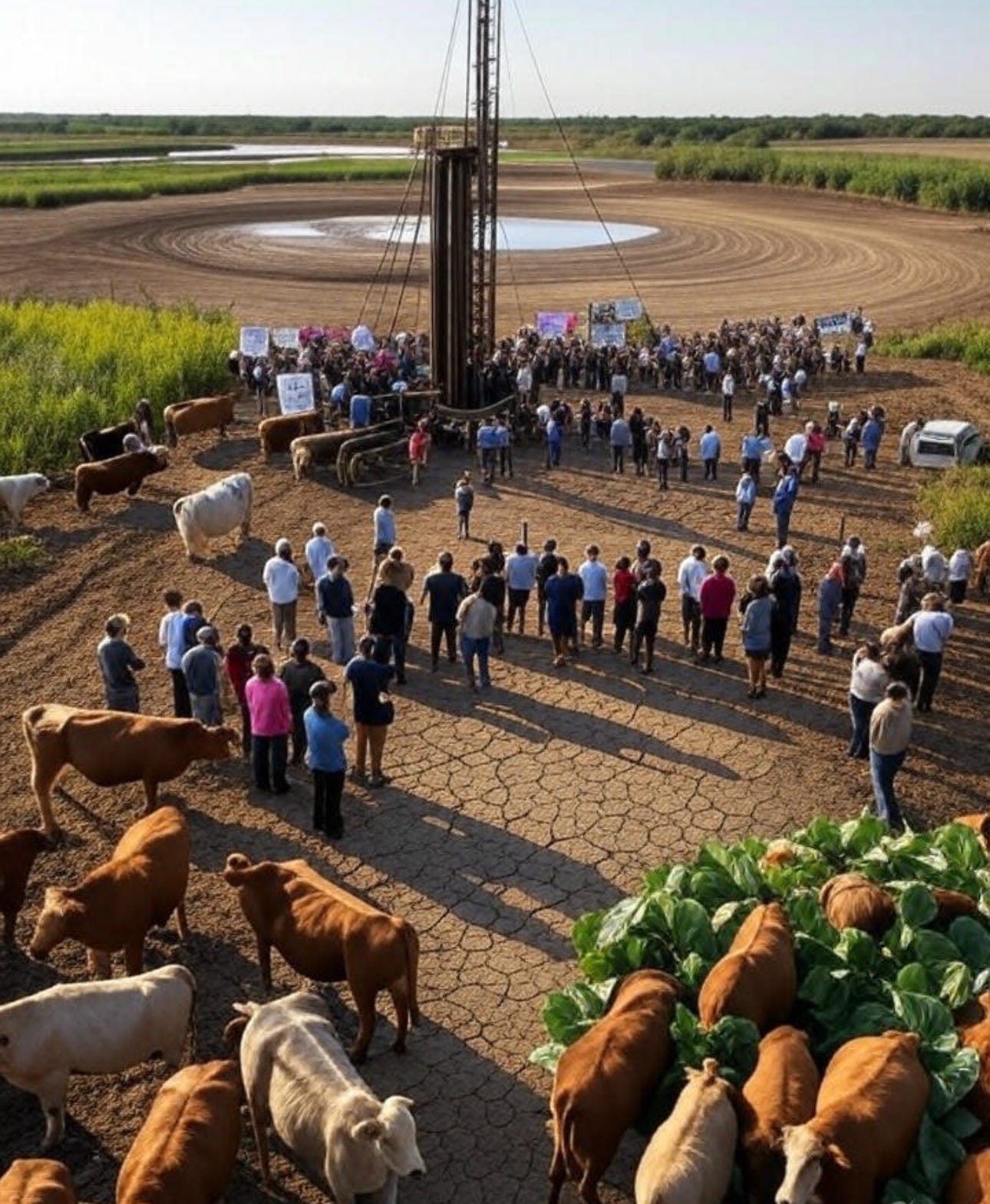
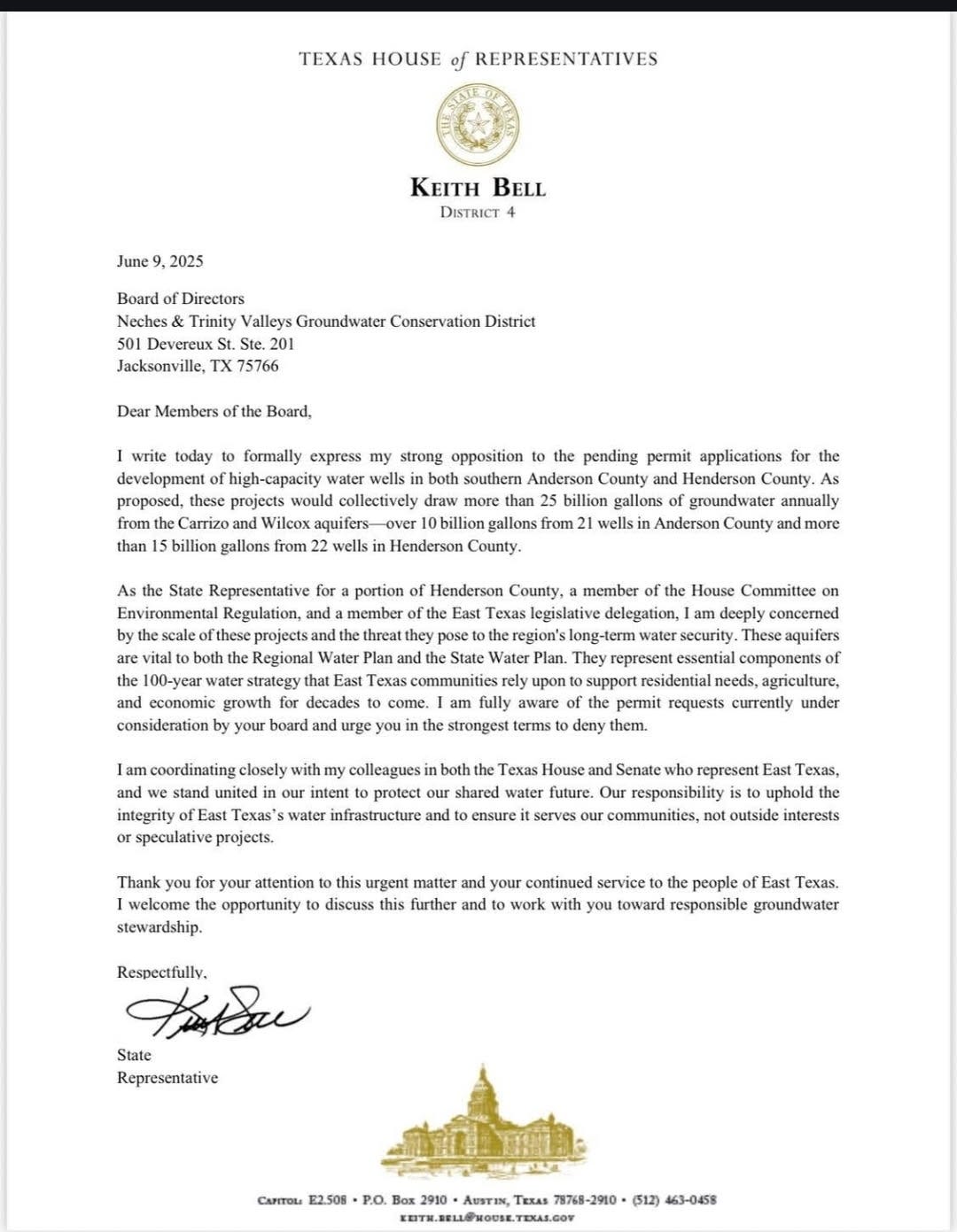
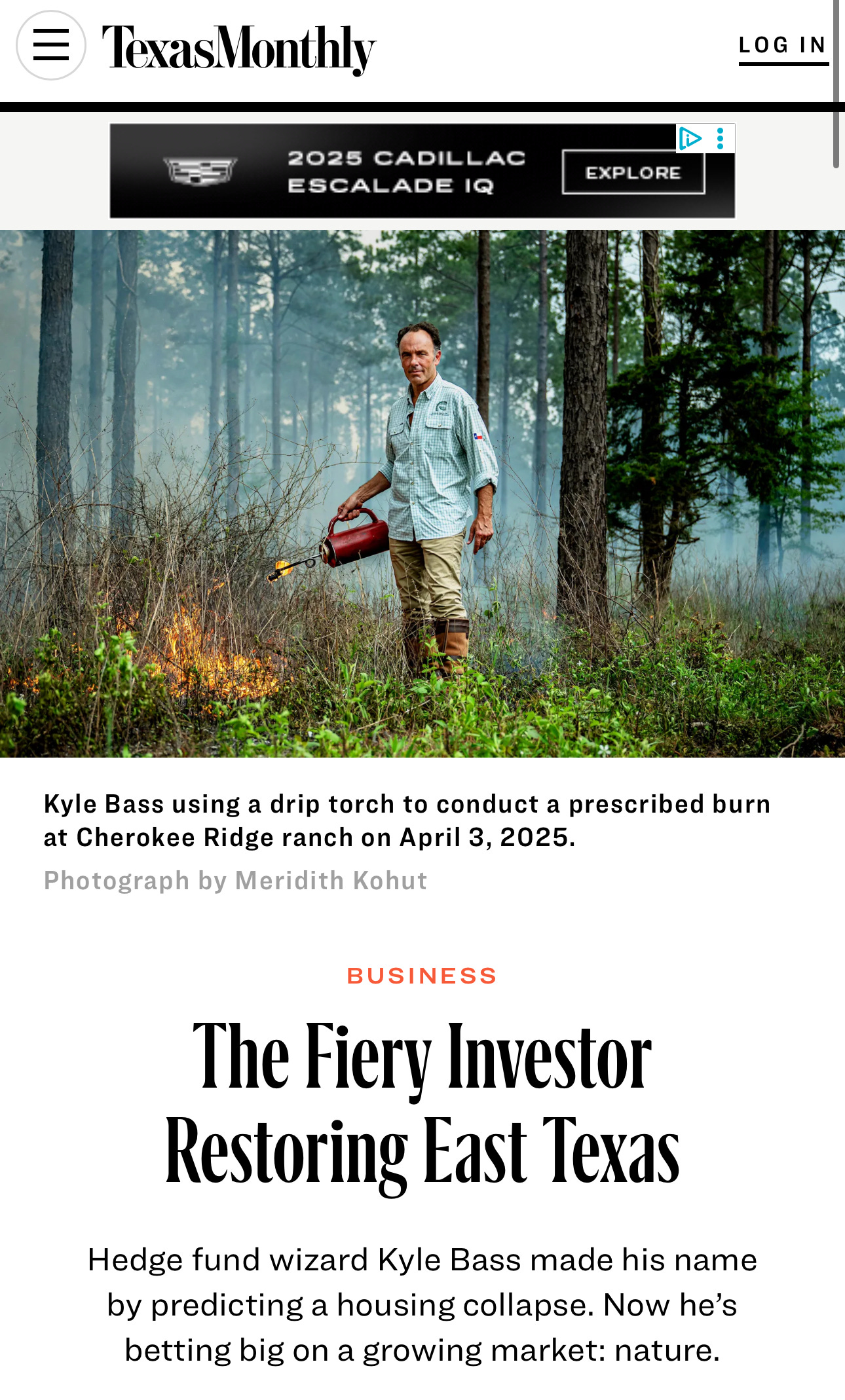
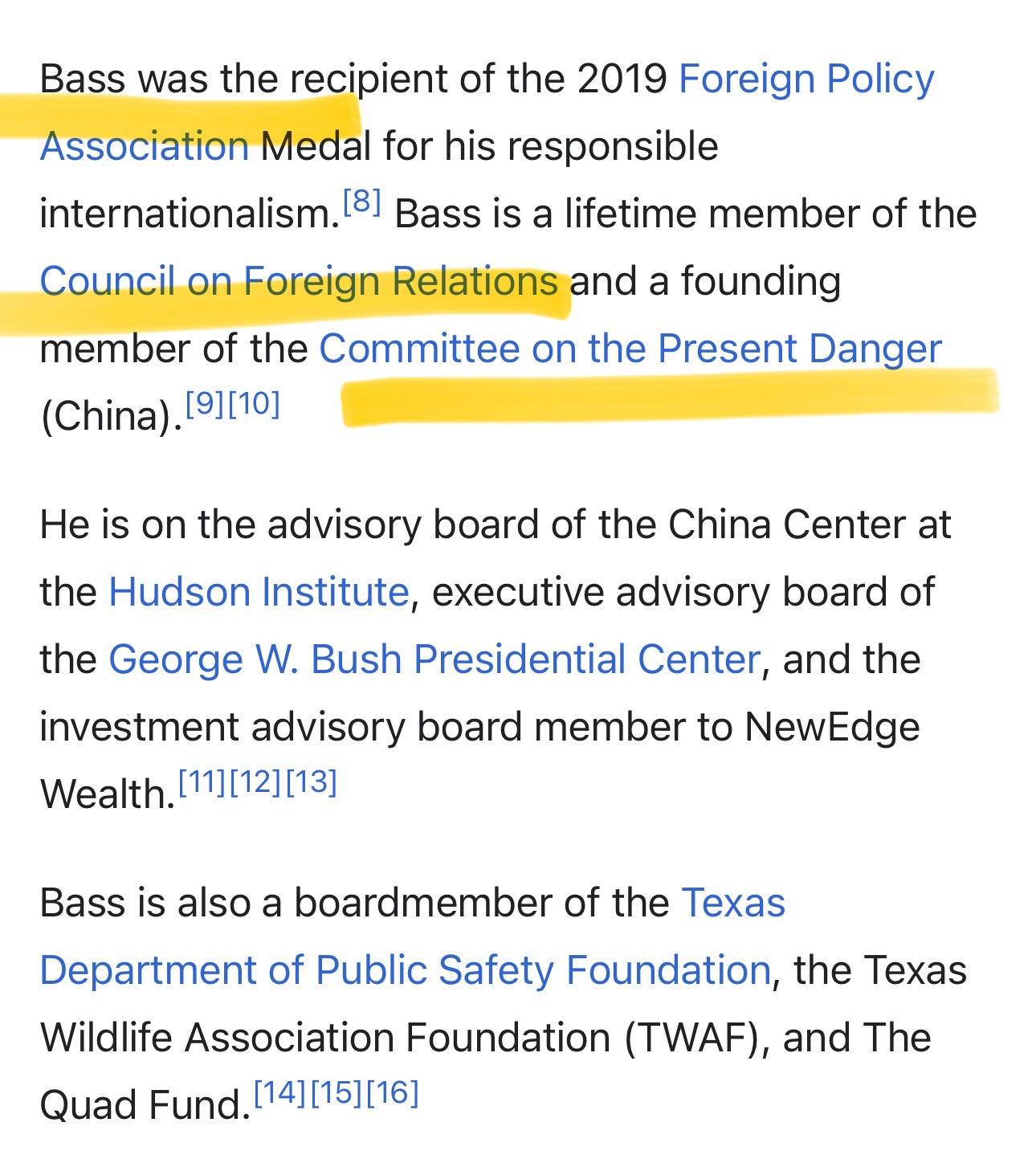
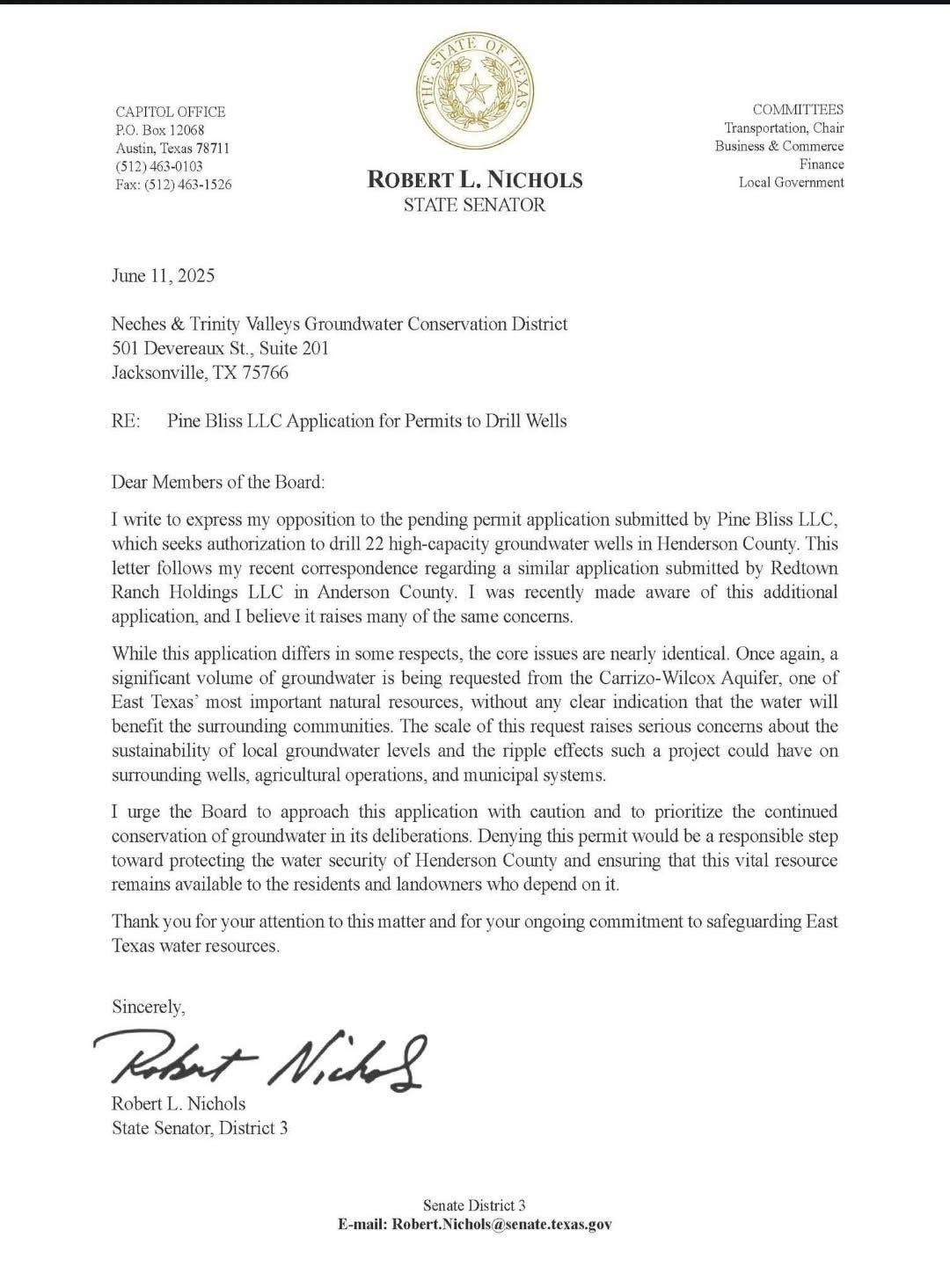
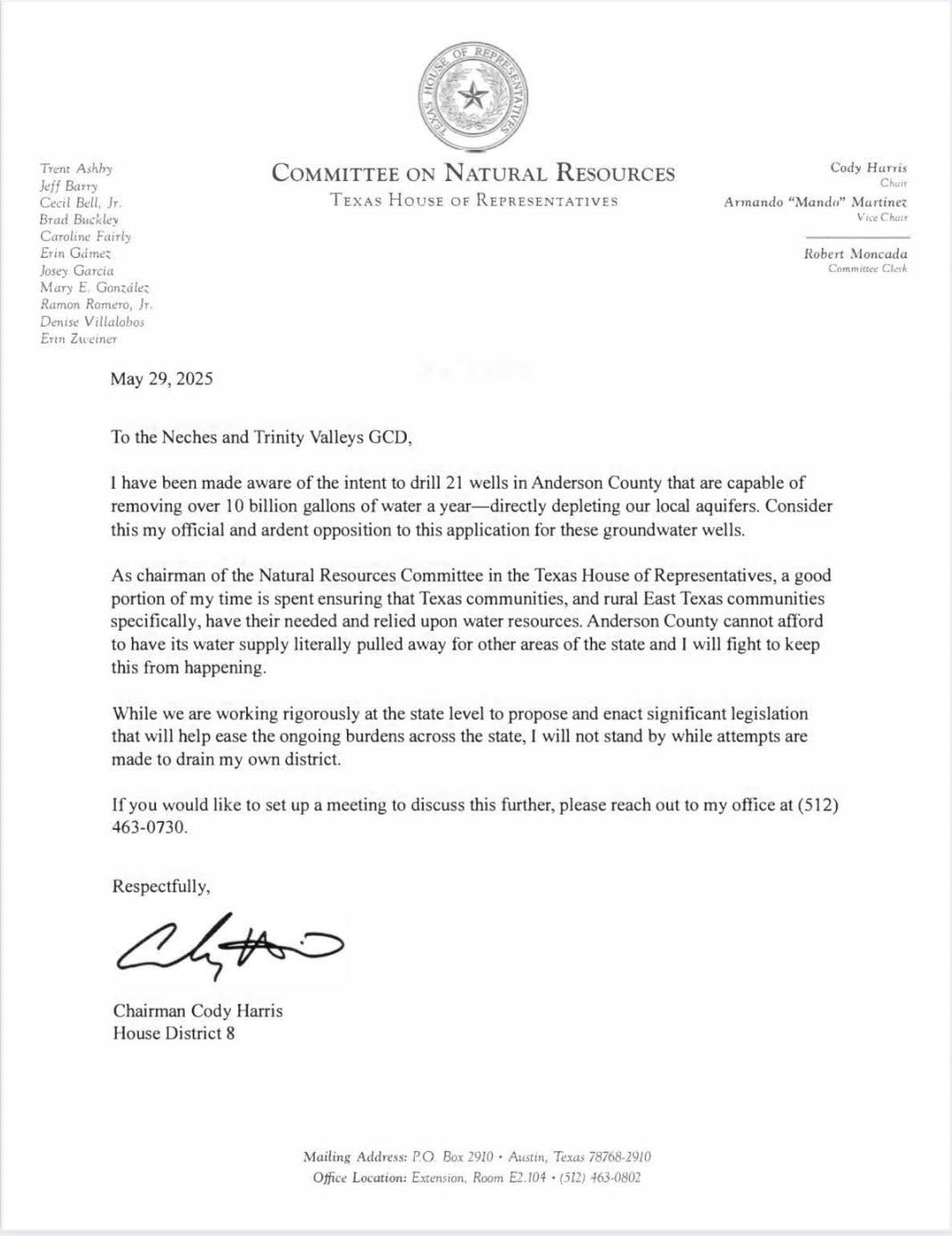
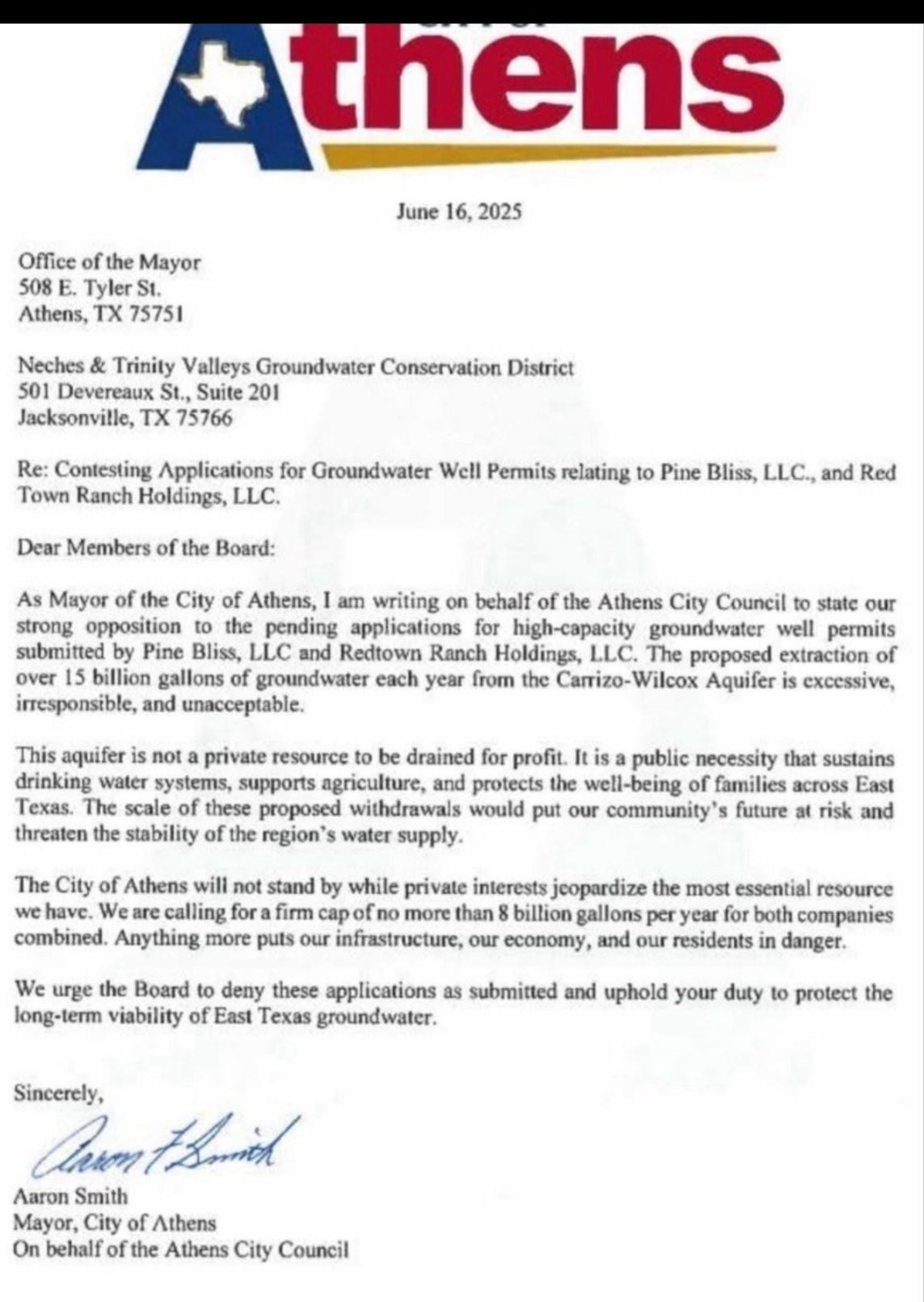
...through Conservation Equity Management (CEM), seeks to extract up to 15 billion gallons of water annually from this vital groundwater source, claiming the project aligns with “careful planning, scientific rigor, and a commitment to sustainability”.
Hmmm....Too bad you can't assume ANYTHING in a name - they are almost always intended to mislead as to intentions! I have no problem with wealthy folks getting more wealthy - in an appropriate way. In reading all of this post, it is not clear that this is the case (or not!) Disinformation is hard to decipher, but Kyle Bass should come clean with pros AND CONS to explain his rationale...why?, because it is almost imposssible for regular people to understand high level claims. That is the only way I could support something that, on its face, seems do be detrimental to both the locals AND Texas' water supply. Just imagine that you were one of the many Texans dependent on water supply for their livelihood! Flesh out the facts!
it's 75 miles to the largest manmade lake in the US, if they need more water pull it from the Toledo Bend Reservoir